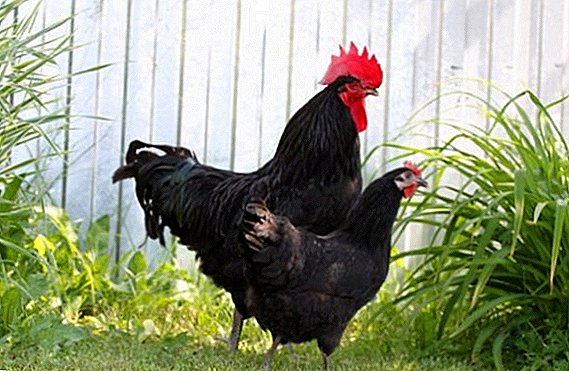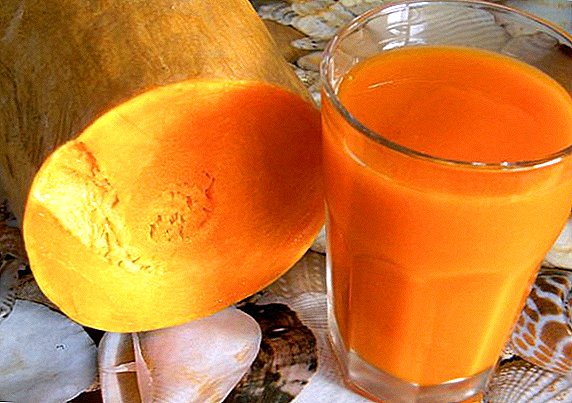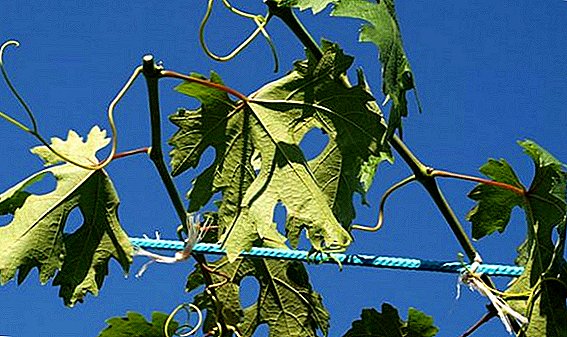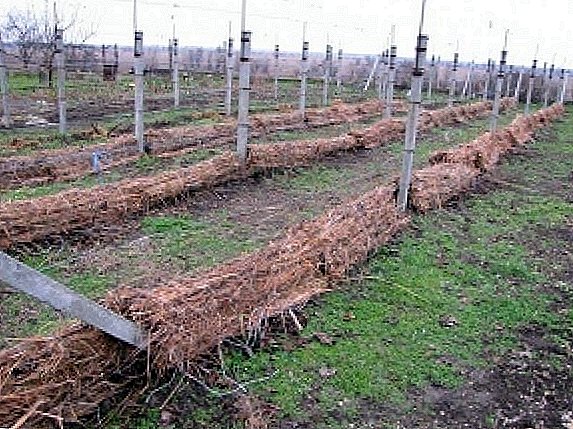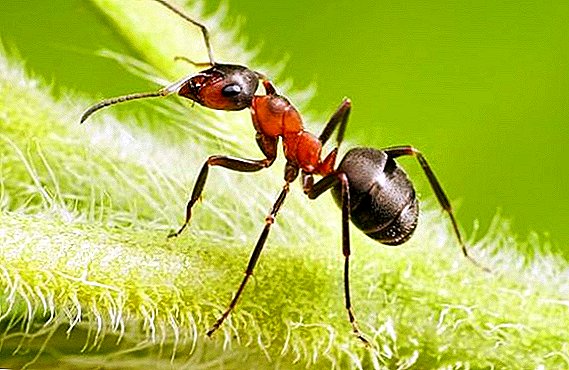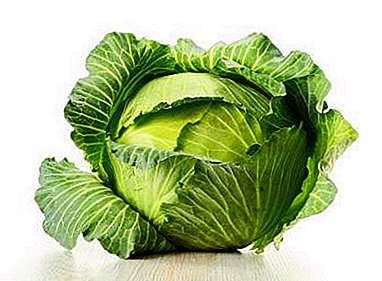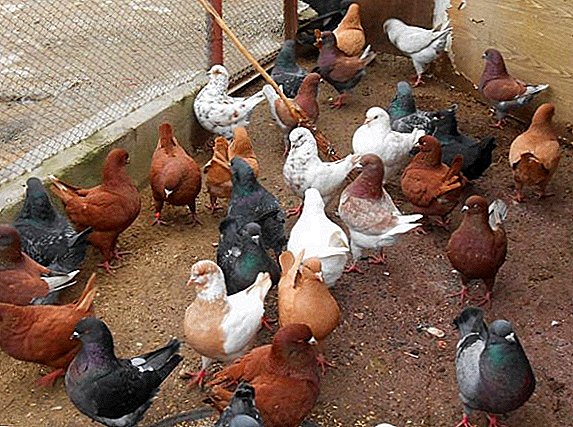 The tradition of breeding pigeons originated a very long time, mainly in the Mediterranean countries. The pigeon meat in appearance and taste resembles the meat of wild birds - it is a dietary and easily digestible product that is suitable even for small children.
The tradition of breeding pigeons originated a very long time, mainly in the Mediterranean countries. The pigeon meat in appearance and taste resembles the meat of wild birds - it is a dietary and easily digestible product that is suitable even for small children.
Today, more and more fans of the poultry industry show interest in breeding pigeon meat breeds, which can be not only a hobby, but also a source of income replenishment. This article describes the basic principles that novice poultry farmers need to know, or those who have decided to start breeding pigeons as a profitable type of business.
Did you know? The ancient Egyptians, Greeks and Romans used pigeon meat for cooking. Ancient Roman scholar Varro, in the I century BC. e. described the imperial dovecote, which contained more than 5,000 birds. They were specially fattened for serving to the imperial family and aristocratic nobility. The high taste and dietary qualities of pigeon meat were also appreciated by the great scientist and physician Avicenna, who recommended that he should be consumed by sick people.
Choice of meat breed (pigeon meat quality)
 Cultivation of pigeons of meat breeds has several interesting characteristics that everyone who has decided to engage in these types of poultry farming needs to know. First of all, it is worth noting that pigeons are unpretentious and very independent birds, which in the summer period are able to take care of the search for food themselves.
Cultivation of pigeons of meat breeds has several interesting characteristics that everyone who has decided to engage in these types of poultry farming needs to know. First of all, it is worth noting that pigeons are unpretentious and very independent birds, which in the summer period are able to take care of the search for food themselves.
Also, pigeons have a number of differences from other representatives of birds:
- first, they belong to flock birds, which are kept mainly in large groups;
- secondly, pigeons are monogamous, that is, once formed pair is very durable and never collapses (not counting the death of one of the partners);
- thirdly, pigeons are the only representatives of birds that produce the so-called "bird's milk" with which they feed the chicks. This is a kind of gruel, which stands out in adult birds with the epithelium of the goiter walls. Moreover, this substance is released not only in females, but also in males, unlike mammals. "Bird's milk" is the main source of food for chicks in the first days of life.
Also, before you start the meat pigeons, you must familiarize yourself with the existing breeds in order to choose the most suitable one. Among the most productive breeds of pigeons are the following: 
- "King" - originally from the USA, it is distinguished by the high fecundity of its representatives. With proper maintenance, pigeons quickly gain weight: in 45 days they reach an average weight of 700 g. In a year, the female "King" can produce about 18 good, well-fed chicks. Adult birds of this breed weigh an average of 650-800 g, and exhibition specimens sometimes reach a weight of one and a half to two kilograms. Slaughter weight of pigeons varies from 60% to 68% and depends on the conditions: when breeding birds exclusively in cages, the weight of the carcasses is much less than in conditions of limited range walking;
- Big pigeon meat "Strasser"Bred in Western Europe, it features high performance. The weight of the male of this breed can reach 1.2 kg. At the age of 30 days, the weight of a pigeon is often 700 g. The meat in the Strassers is fine-fibrous. Slaughter weight of this breed reaches 60%.
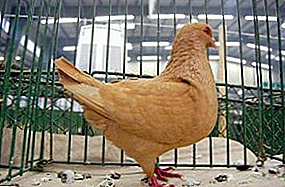 "Roman" pigeons - the breed was bred in Italy, and improved further in France. The weight of adult males reaches 1-1.3 kg, females - up to 1.1 kg. Slaughter weight with proper care can reach 70%.
"Roman" pigeons - the breed was bred in Italy, and improved further in France. The weight of adult males reaches 1-1.3 kg, females - up to 1.1 kg. Slaughter weight with proper care can reach 70%.- "Monden" Breed of pigeons hailing from France, Monde-Marsan. The weight of adult pigeons reaches 1.1 kg. For 30 days the young of this breed can be fattened to 700 gr. Slaughter meat output is 61%. Pigeons "Mondensky" breed have the highest index of massiveness among other meat breeds of pigeons, which is 28.7%;
- "Carnot" - the earliest breed of pigeons. The weight of an adult male ranges from 550 to 700 g. For a month, youngsters can be fattened to 330-340 g. Of course, this is not much compared to other breeds, however, in the case of this breed, weight is not the main thing. "Carnot" is appreciated for its highest taste of meat, which is several times superior to other breeds.
 In general, there are not so many meat breeds of pigeons, such as, for example, breeds of chickens or ducks. Therefore, the main problem of choosing a bird is to find a good producer. Most often, poultry farmers have to look for the best representatives of a particular breed abroad: in Poland, the Czech Republic, and Germany, depending on which country they breed most pigeons of this breed.
In general, there are not so many meat breeds of pigeons, such as, for example, breeds of chickens or ducks. Therefore, the main problem of choosing a bird is to find a good producer. Most often, poultry farmers have to look for the best representatives of a particular breed abroad: in Poland, the Czech Republic, and Germany, depending on which country they breed most pigeons of this breed.When choosing a bird for breeding, you must first pay attention to its health. The pigeon should not be apathetic and lethargic, its eyes should be clean, and feathers should be smooth, not plucked. It is necessary to open the bird's wing and check if there are no holes in the feathers (a sign of infection with the puffed-up meal), of course, you do not need to buy such a bird.
It is also very important to purchase pigeons in pairs. In order to understand where the pair, put the birds in a box of two. If the pigeon coos and the dove fluffs the feathers and bows his head, it means that there is a pair before you. If the birds are fighting, then they are individuals of the same sex.
Room for pigeons

Since pigeons are extremely unpretentious birds, a lot of space will not be needed to build a pigeon farm. Suitable attic room or superstructure in barns and warehouses. Of course, the ideal option is to build a separate room where pigeons will be kept. But this does not require large financial costs: suitable as an open-air cage with a tensioned net-rabitsy, and a typical house dovecote, where the birds will rest and hide from the rain.
Regardless of the choice of premises, the main thing is that cats and other small predators could not enter the pigeon house territory. Therefore, it will not be superfluous to lift the pigeon house above the ground. When calculating the area for the pigeon house - it should be taken into account that 12 m² can hold up to 50 pigeons. After the arrangement of the premises, the bottom of the pigeon house should be sprinkled with sand, as this will facilitate cleaning in the future. Along the walls of the dovecote need to adjust the perch.
Preparation for nesting pigeons
Before the nesting season in dovecote, it is necessary to thoroughly clean and equip the nesting devices and the steaming boxes. It is imperative that the number of steaming boxes be greater than the pairs of pigeons in the dovecote. This will allow the pigeons to choose their own place for mating and not to fight for it. 
For pairing it is convenient to use a nest box with a door. Boxes should be located as far from each other as possible so that birds can remember the location of their nest. After the pigeons form families, the mating boxes must be turned into nesting ones; for this, two nests are placed in each box, right and left.
In small dovecotes, you can arrange the nest without boxes, right on the racks. Then, the nests will need to be separated from each other by vertical walls. It should be borne in mind that the nesting boxes should be located so that they are sufficiently illuminated, but direct light does not fall into the nests. Before mating pigeons, the boxes are covered with soft bedding of hay or straw. When the birds shove their nests, you need to pour ashes or pyrethrum under them.
Rearing pigeons
For the cultivation of pigeons for meat, it is very important to make the right diet for young birds. The quantity and quality of meat at the output directly depends on this.
Fattening
 The young are most exposed to various diseases during growth. Therefore, the feed must contain a sufficient amount of vitamins, nutrients and minerals. The first weeks after the hatching, young pigeons require a large amount of food. Reduce portions when the iris of young individuals becomes the same as in adult birds. In the morning the birds are given a small portion of food, and in the evening they increase it.
The young are most exposed to various diseases during growth. Therefore, the feed must contain a sufficient amount of vitamins, nutrients and minerals. The first weeks after the hatching, young pigeons require a large amount of food. Reduce portions when the iris of young individuals becomes the same as in adult birds. In the morning the birds are given a small portion of food, and in the evening they increase it.
It is recommended to moisten the grain with a small amount of fish oil before feeding. To young pigeons grow well, they are fed a large number of wheat with barley and peas. After the young growth begins to fly in a flock with adult birds, the amount of wheat is reduced by 2 times, replacing it with equal parts of peas and wiki. The most common composition for feeding young animals: wheat 20%, peas and maize 10% each, barley 20% and millet 30%. The daily rate of such a mixture for 1 young bird is 40 g.
For weakened young individuals that are lagging behind in growth and development, more nutritious will be required. a mixture of wheat, corn grits, refined rice, wheat porridge and fodder yeast. Also in the mix you need to add 5 drops of fish oil, and in drinking water - glucose solution 5%.
Juveniles will require supplementation in the diet and in the form of succulent green fodder at the rate of 10 g per 1 bird per day. In the form of additives, boiled potatoes, porridge and bread are suitable. Flesh is fattened within 12-14 days. You should also make sure that before each meal the goiter of the bird is empty.
Important! You can not overfeed young animals with additives to the main feed mixture, it will lead to intestinal upset and weight loss.
Bird slaughter
 Birds of meat breed of pigeons are usually slaughtered, usually between 28 and 35 days old. Before this, the bird is fattened with the seeds of dill, cumin, anise, to give the meat a savory taste of the game. To make the meat white and more tender, you can slaughter the bird with salted milk before slaughter. The day before slaughter, the birds are stopped to feed, this simplifies the gutting of carcasses and improves the quality of meat. Pigeons can be killed in the same way as other domestic birds.
Birds of meat breed of pigeons are usually slaughtered, usually between 28 and 35 days old. Before this, the bird is fattened with the seeds of dill, cumin, anise, to give the meat a savory taste of the game. To make the meat white and more tender, you can slaughter the bird with salted milk before slaughter. The day before slaughter, the birds are stopped to feed, this simplifies the gutting of carcasses and improves the quality of meat. Pigeons can be killed in the same way as other domestic birds.


 "Roman" pigeons - the breed was bred in Italy, and improved further in France. The weight of adult males reaches 1-1.3 kg, females - up to 1.1 kg. Slaughter weight with proper care can reach 70%.
"Roman" pigeons - the breed was bred in Italy, and improved further in France. The weight of adult males reaches 1-1.3 kg, females - up to 1.1 kg. Slaughter weight with proper care can reach 70%.